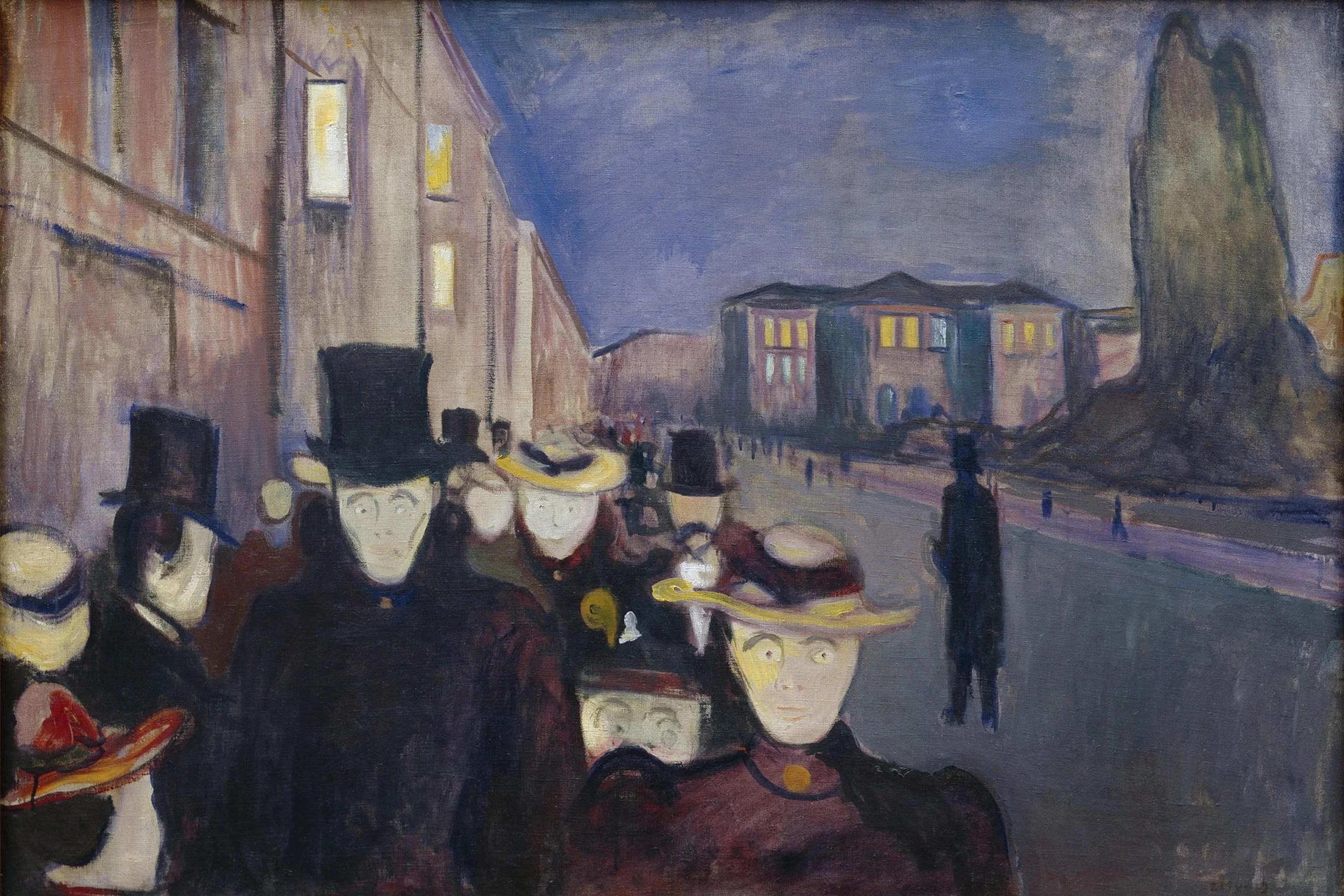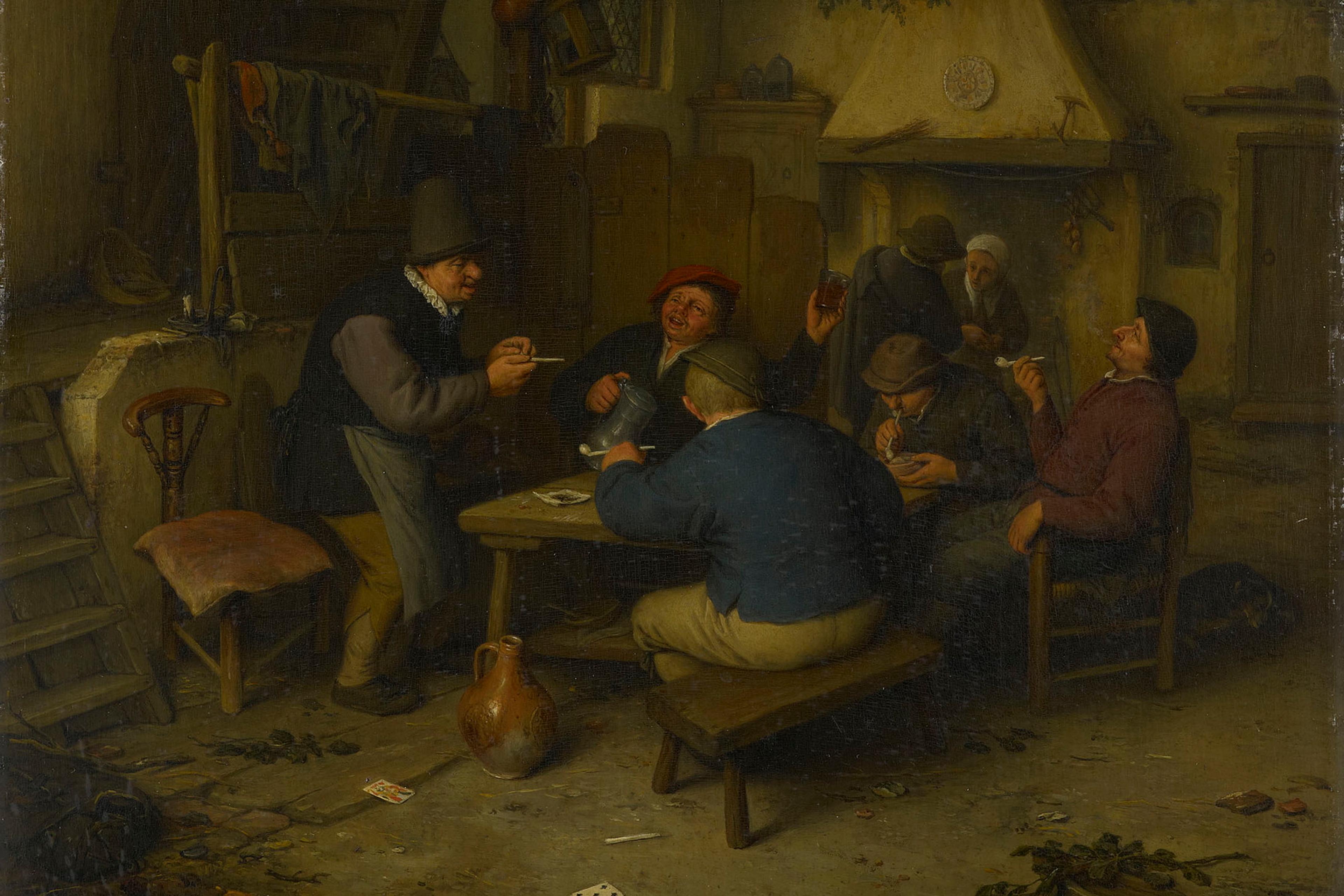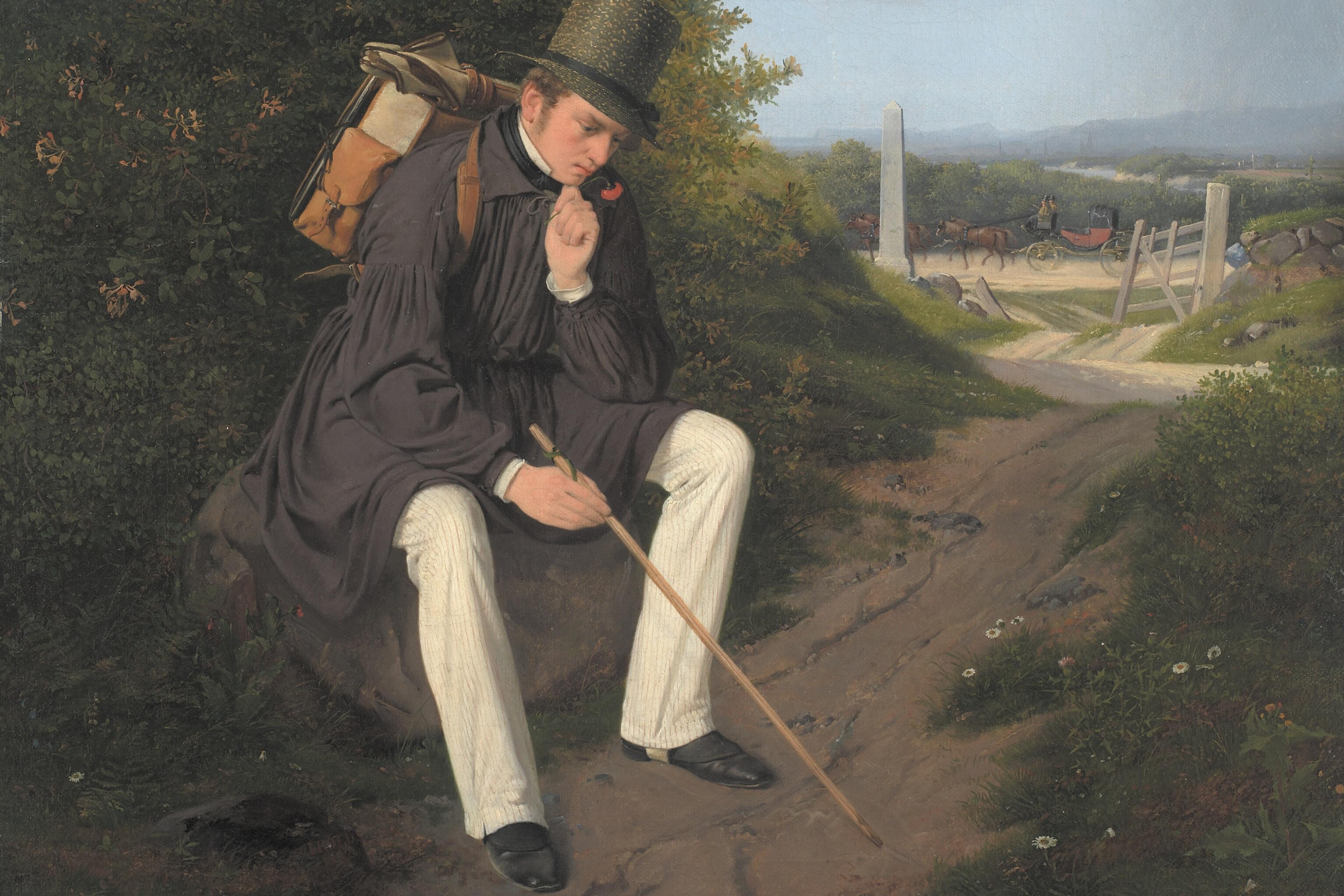In Negative Dialectics (1966), Theodor Adorno speaks of a ‘peephole metaphysics’, a term that nicely captures the overwhelming reliance of Western thought on visual metaphors. Take, for instance, the notions of ‘theory’ (from ancient Greek theōréō, ‘to look at, view’), ‘speculation’ (from Latin speculātiō, ‘watching’), the Platonic noesis (the highest kind of intellectual thought), which stems from the ancient Greek noeîn, ‘to see’, or the ‘essence’ of something (derived from eídō, ‘I see’). The visual has dominated Western philosophy at the expense of other senses.
From Aristotle to Hegel, sight – and hearing – were considered theoretical senses, and it was their theoretical nature that granted them philosophical priority. ‘Theoretical interest,’ G W F Hegel writes, ‘lets individual things alone and retreats from them as sensuous particularities, since this sensuous particularity is not what intelligence tries to study.’ Theoretical senses operate at a distance from their object. To theoretical contemplation, Hegel opposes a practical relation to the object, one demanding contact, proximity, a traversing of all distance. Practical senses entail the consuming of the object in its immediate sensuous particularity. Demanding proximity and contact, the practical senses include touch and – its special form – taste. (The word ‘taste’ is likely derived from tangere, ‘to touch’.)
To which of the two sides in this philosophical division of labour does smell belong? Is it a theoretical sense or a practical sense? On the one hand, smell operates at a distance, and this feature places it on the theoretical side. On the other hand, smell relates most intimately to the immediate sensuous materiality of the object, such that it seems impossible for it to reflect anything beyond the object’s immediately given sensuous properties. Despite sharing their key feature, the sense of smell is at odds with the two theoretical senses. But nor does it fit the category of practical interest, for distance from the object is the material condition of olfactory perception. Aside from this external distinctive feature, there is also an internal difference distinguishing smell from the two practical senses. If these are directed at the thing in its particularity, effecting sensuous satisfaction as the result of the object’s consumption, in the case of smell it is the subject that is consumed by the object, and, moreover, consumed by it from afar.
What does it mean to say that, in smelling, the subject is consumed by the object? In his Treatise on the Sensations (1754), Étienne Bonnot de Condillac imagines a statue of a human gradually becoming ‘moved’ by sense perceptions, starting with the smell of the rose. When smelling the rose the statue directly experiences itself as being that smell: Olfacio, ergo sum – I smell, therefore I am (that smell). Adorno and Max Horkheimer emphasise this aspect of olfaction, contrasting it with that of visual perception: ‘When we see we remain who we are, when we smell we are absorbed entirely.’ The touch of the eye is theatrical, that of smell absorptive. ‘Vision,’ writes Jean-Luc Nancy, ‘does not penetrate, but glides … It is a touching that does not absorb’.
Smell is the site where our brain directly touches upon the world
Hegel’s distinction between theoretical and practical senses echoes Immanuel Kant’s typology of the organic senses. Here, the paradoxical intermediate position of smell once again comes to the fore. For Kant, smell is situated at the very interface of distance and proximity. In smell, the most distant proximity coincides with the nearest of distances. As a unique subspecies of taste, smell is taste at a distance. But, echoing Condillac’s point, despite its unique perceptual capacity for consuming objects from afar, smell’s perceptual contact with olfactory objects is no less immediate. On the contrary, ‘taking something in through smell (in the lungs),’ Kant writes, ‘is even more intimate than taking something in through the absorptive vessels of the mouth or throat.’ The distance implied in smelling presupposes that the object remains untouched, untouchable even, yet this distancing effects the most intimate proximity: smell touches on the untouchable. The psychoanalyst Jacques Lacan makes the same Kantian point, writing that ‘the olfactory is the only dimension that allows one to reduce distance to zero’.
Kant’s (and Lacan’s) insight is confirmed by the structure of olfaction’s neurobiological interface, subverting the divide between interiority and exteriority, or between the subject and its object. Out of the 12 pairs of cranial nerves (not counting the recently canonised nervus terminalis), only the olfactory (CN I) and the optic nerve (CN II) emerge directly from the largest part of the brain, the cerebrum, while the remaining originate in the brainstem. But what makes CN I truly unique is this: the olfactory nerve is the only nerve of the human body that is directly exposed to the environment, dangling freely in its at once protective and exposing shell. Smell is the site where our brain directly touches upon the world, quite literally providing the brain–world interface. The great outdoors is housed in the roof of our nasal cavity.
The incorporation of the object through smell is more intimate and profound than simple ingestion. As mentioned, it entails a cannibalistic consequence: to smell an object is to be consumed by it. Georges Bataille purportedly suggested that a kiss is the beginning of cannibalism. If a kiss is the beginning of cannibalism, a sniff is the beginning of a kiss. Pierre de Ronsard, the 16th-century French poet, understood this: ‘When from thy half-closed lips … Rose-scented breath I smell’ Quoting these lines, the historian Robert Mandrou is surprised that, for Ronsard, a kiss ‘was not connected with touch, but with scent’. Mandrou neglects the Kantian point: to sniff is to (be) touch(ed) from a distance.
A sniff is a kiss at a distance – think of Seal’s famous lyric: ‘I compare you to a kiss from a rose…’ The insight into the olfactory origins of the kiss may no longer be evident, but is supported by the Thai haawm kaem, or the sniff-kiss. Instead of making direct mouth-to-mouth contact with another person, the practice of sniff-kissing consists of placing the nose near the cheek, hair or neck and inhaling their scent. In his 1907 paper on the sniff-kiss, E Washburn Hopkins demonstrated that this seemingly unusual manner of kissing is surprisingly common. Examples include the Inuit kiss, which ‘is really only an inhalation of breath or a sniff’; among African nations, ‘it is customary to show affection by means of a vigorous sniff’; the Malayan ‘nasal salutation’ was described already by Charles Darwin and Herbert Spencer; on ‘the North-east frontier of India … people do not kiss but sniff at or smell each other … they do not say “give me a kiss” but “smell me”.’ The cult of kissing finds its prototype in the sniff-kiss. Recently, the credo that a true love’s kiss is in fact a sniff-kiss appears to have been taken to heart by an Israeli smell-based social networking site, SmellSpace, as well as by the first mail-order smell dating service, letting the nose take the matchmaking lead.
In Margarethe von Trotta’s feature film Hannah Arendt (2012), Heinrich Blücher, Arendt’s husband, is about to leave the house without giving her a kiss. Upon her reproach, he is quick to excuse himself by offering a shallow piece of philosophical wisdom, wrapped in cheap praise of his spouse: ‘Never disturb a great philosopher when they’re thinking.’ Arendt responds: ‘But they can’t think without kisses.’ No cogito without the sniff-kiss. Read along these lines, Arendt’s response to her husband is reminiscent of the well-known lines from Plato’s Parmenides. Parmenides asks Socrates, his young pupil, whether worthless and undignified things, ‘like hair and mud and dirt’, contain pure philosophical forms. When Socrates turns up his nose, reluctant to grant to these things the dignity of philosophical enquiry, Parmenides replies: ‘you are still young, Socrates, and philosophy has not yet gripped you as, in my opinion, it will in the future, once you begin to consider none of the cases beneath your notice. Now, though, you still care about what people think, because of your youth.’
Philosophy is inclined to turn its nose up at smell, preferring its space of reasons sanitary and deodorised, thus denigrating the practical and the absorptive. Yet, Plato tells us, it is precisely in its capacity to sniff-kiss, grasp or take in that which lies beyond the aseptic space of reasons that philosophy’s status and fate are being determined. In philosophy, smell stands for the dissenting faecal matter of sensibility, its earthly and animalistic edge. Its deodorising effort is emblematic of culture as such. While the remaining four senses are cast and recast in highly praised social roles, the sense of smell is tasked with the basest of cultural chores: shit management. If unexamined life is not worth living, the philosophical examination of life must entail stool analysis. For philosophy has only truly gripped us once it has gripped us by the nose.








